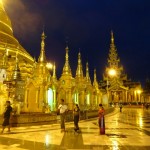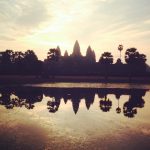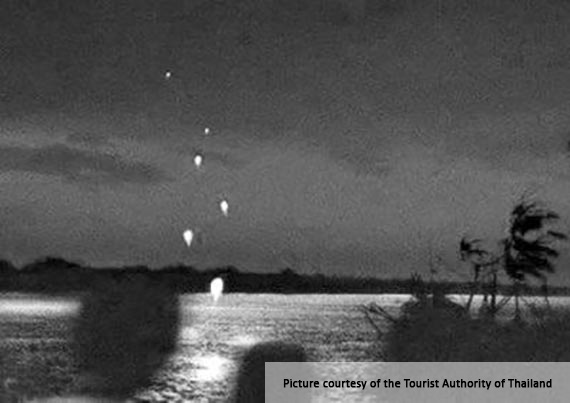The Naga Fireball is one of those mysteries of nature that people would love to believe but which stretches credibility to its limits. So what is the story behind this Southeast Asian phenomenon and does it have any basis in science?
According to religious tradition the Naga is a huge and mighty water creature, usually depicted as a snake, that made its way from Hindu myth into Buddhism. The Naga motif is common in Thai, Lao and Cambodian wats (temples) and is featured heavily in the decoration of the ancient temples of Angkor.
The Naga Fireballs (bung fai paya nak in Thai), are a phenomenon that occurs every year around October. It is marked by glowing balls of light that rise up from the Mekong River at Nong Khai, the border between Thailand and Laos. Said to vary in size from just sparkles to orbs the size of basketballs, and reddish in appearance, the spheres of light are said to ascend 200m into the air before disappearing. The number of fireballs seen on any given night can be from dozens to thousands and they are most often sighted around the night of Wan Ok Phansan, an October full moon festival marking the last day of Vassa (a Buddhists holiday that is often compared to Lent).
In mythology, the fireballs are said to be Naga’s breath. Various theories have been put forward to explain the fireballs themselves, ranging from Laos soldiers firing tracer rounds into the air (the subject of a controversial 2002 Thai television documentary) to simple fireworks. The fireballs have become increasingly famous regionally as the Nong Khai local government now promotes the festival relentlessly; on entering the town you’ll be greeted by the sign “Welcome to Nong Khai – the home of the Naga Dancing Fireballs”.
Scientists have argued over the cause of the fireballs for many years with theories ranging from swamp gas to plasma balls. The Science Ministry of Thailand even claimed to have solved the mystery once and for all citing flammable phosphine gas as the cause, the explanation for the regular timing of the event being dependent on the build-up of the marsh gas on the riverbed, which often peaks in October. In his online science podcast ‘Skeptoid’ Brian Dunning argues a very convincing case against this theory, based mainly on the mix of gases required for spontaneous combustion, and sadly, the laws of physics being as they are, it is indeed more plausible that a river serpent is spitting flaming balls of dragon-breath skyward, than it is for the Naga Fireballs to be naturally produced burning gas bubbles.
It’s estimated that around 400,000 people were in attendance on the night of Wan Ok Phansan in 2001. Without doubt, if you observe the Mekong River on festival night these days, in Nong Khai itself at least, what you see will be fireworks, however the fireballs have supposedly been reported for generations and along a stretch of 200kms of river – too ancient and extensive to be explained away so readily.
Why not take a trip to Thailand and Laos this autumn and check it out for yourself? You may even come up with some theories of your own!





